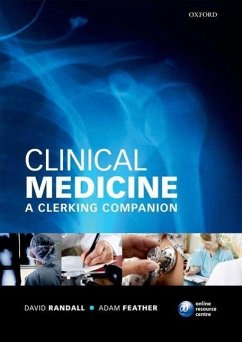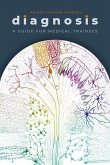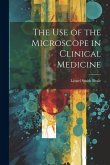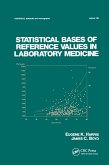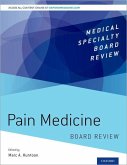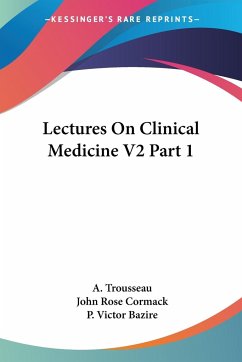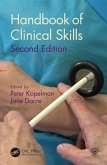Schade – dieser Artikel ist leider ausverkauft. Sobald wir wissen, ob und wann der Artikel wieder verfügbar ist, informieren wir Sie an dieser Stelle.
- Broschiertes Buch
- Merkliste
- Auf die Merkliste
- Bewerten Bewerten
- Teilen
- Produkt teilen
- Produkterinnerung
- Produkterinnerung
Clinical Medicine: A Clerking Companion is written for inexperienced clinical students who are new to the wards, and helps them to use their patients to learn medicine. It aims to transform students who know a bit about the medical sciences into young doctors who can draw knowledge and experience together to diagnose and treat real patients.
Andere Kunden interessierten sich auch für
![Oxford Assess and Progress: Situational Judgement Test Oxford Assess and Progress: Situational Judgement Test]() David MetcalfeOxford Assess and Progress: Situational Judgement Test40,99 €
David MetcalfeOxford Assess and Progress: Situational Judgement Test40,99 €![Diagnosis Diagnosis]() Ashley Graham KennedyDiagnosis39,99 €
Ashley Graham KennedyDiagnosis39,99 €![The Use of the Microscope in Clinical Medicine The Use of the Microscope in Clinical Medicine]() Lionel Smith BealeThe Use of the Microscope in Clinical Medicine19,99 €
Lionel Smith BealeThe Use of the Microscope in Clinical Medicine19,99 €![Statistical Bases of Reference Values in Laboratory Medicine Statistical Bases of Reference Values in Laboratory Medicine]() Eugene K HarrisStatistical Bases of Reference Values in Laboratory Medicine87,99 €
Eugene K HarrisStatistical Bases of Reference Values in Laboratory Medicine87,99 €![Pain Medicine Board Review Pain Medicine Board Review]() Pain Medicine Board Review178,99 €
Pain Medicine Board Review178,99 €![Lectures On Clinical Medicine V2 Part 1 Lectures On Clinical Medicine V2 Part 1]() A. TrousseauLectures On Clinical Medicine V2 Part 134,99 €
A. TrousseauLectures On Clinical Medicine V2 Part 134,99 €![Handbook of Clinical Skills Handbook of Clinical Skills]() Handbook of Clinical Skills43,99 €
Handbook of Clinical Skills43,99 €-
Clinical Medicine: A Clerking Companion is written for inexperienced clinical students who are new to the wards, and helps them to use their patients to learn medicine. It aims to transform students who know a bit about the medical sciences into young doctors who can draw knowledge and experience together to diagnose and treat real patients.
Produktdetails
- Produktdetails
- Verlag: Hurst & Co.
- Seitenzahl: 336
- Erscheinungstermin: 25. Juni 2011
- Englisch
- Abmessung: 295mm x 211mm x 15mm
- Gewicht: 998g
- ISBN-13: 9780199574377
- ISBN-10: 0199574375
- Artikelnr.: 33253415
- Herstellerkennzeichnung
- Libri GmbH
- Europaallee 1
- 36244 Bad Hersfeld
- gpsr@libri.de
- Verlag: Hurst & Co.
- Seitenzahl: 336
- Erscheinungstermin: 25. Juni 2011
- Englisch
- Abmessung: 295mm x 211mm x 15mm
- Gewicht: 998g
- ISBN-13: 9780199574377
- ISBN-10: 0199574375
- Artikelnr.: 33253415
- Herstellerkennzeichnung
- Libri GmbH
- Europaallee 1
- 36244 Bad Hersfeld
- gpsr@libri.de
David Randall studied medicine at Peterhouse, Cambridge, and then at Barts and the London School of Medicine and Dentistry. He then completed an academic foundation programme specialising in medical education and is now working as a junior doctor in general medicine at Queen's Hospital, Romford. Adam Feather is Senior Lecturer in Medical Education at the Institute of Health Science Education, Barts and the London School of Medicine and Dentistry. Adam is a Lead for Clinical Skills with a particular interest in the teaching and learning of clinical examination skills. He is the co lead for part 6a (written Finals) assessment with particular interest in the development of new and innovative written, computer based and clinical assessments.
Introduction
1: Introduction
2: How to use this book
3: Recognising the sick patient
4: History taking
5: Examination
6: Forming an impression
7: How to present patients
8: Writing in patients' notes
9: Prescibing skills
10: Glossary
11: Table of normal values
Chapter 1: Cardiology
1: Introduction to Cardiology
2: Acute coronary syndrome
3: Myocardial infarction and secondary prevention
4: Heart failure
5: Dysrhythmias
6: Valvular and structural heart disease
7: Syncope and falls
Chapter 2: Respiratory medicine
1: Introduction to respiratory medicine
2: Athsma
3: COPD
4: DVT and PE
5: Pneumnia
6: Lung cancer
7: Pneumthorax
8: Tuberculosis
9: Interstitial lung disease
Chapter 3: Gastroeneterology
1: Introduction to gastroenterology
2: Upper GI bleeding
3: Gastric and oesophageal cancer
4: Acute hepatitis
5: Chronic liver disease
6: Inflammatory bowel disease
Chapter 4: Renal medicine
1: Introduction to renal medicine
2: Acute kidney injury
3: Chronic kidney disease
4: UTI and pyelonephritis
Chapter 5: Endocrinology
1: Introduction to endocrinology
2: Hyperglycaemic emergencies
3: The diabetic review
4: Thyroid disease
5: Steroid disease
Chapter 6: Neurology
1: Introduction to neurology
2: Stroke and TIAs
3: Acute confusion
4: Seizures
5: Headache
6: Spinal and peripheral nerve lesions
7: Parkinson's disease
Chapter 7: Multisystem diseases
1: Introduction to multisystem diseases
2: Acute arthritis
3: Anaemia
4: Haematological malignacies
5: HIV and AIDS
6: Skin ulcers
7: Tropical diseases
Chapter 8: Surgery
1: Introduction to surgery
2: Acute abdominal pain
3: Intestinal obstruction
4: Pancreatitis
5: Hernias
6: Colorectal carcinoma
7: Lumps and bumps
8: Breast cancer
9: Peripheral vascular disease
10: Haematuria
11: Prostate disease
12: Trauma
1: Introduction
2: How to use this book
3: Recognising the sick patient
4: History taking
5: Examination
6: Forming an impression
7: How to present patients
8: Writing in patients' notes
9: Prescibing skills
10: Glossary
11: Table of normal values
Chapter 1: Cardiology
1: Introduction to Cardiology
2: Acute coronary syndrome
3: Myocardial infarction and secondary prevention
4: Heart failure
5: Dysrhythmias
6: Valvular and structural heart disease
7: Syncope and falls
Chapter 2: Respiratory medicine
1: Introduction to respiratory medicine
2: Athsma
3: COPD
4: DVT and PE
5: Pneumnia
6: Lung cancer
7: Pneumthorax
8: Tuberculosis
9: Interstitial lung disease
Chapter 3: Gastroeneterology
1: Introduction to gastroenterology
2: Upper GI bleeding
3: Gastric and oesophageal cancer
4: Acute hepatitis
5: Chronic liver disease
6: Inflammatory bowel disease
Chapter 4: Renal medicine
1: Introduction to renal medicine
2: Acute kidney injury
3: Chronic kidney disease
4: UTI and pyelonephritis
Chapter 5: Endocrinology
1: Introduction to endocrinology
2: Hyperglycaemic emergencies
3: The diabetic review
4: Thyroid disease
5: Steroid disease
Chapter 6: Neurology
1: Introduction to neurology
2: Stroke and TIAs
3: Acute confusion
4: Seizures
5: Headache
6: Spinal and peripheral nerve lesions
7: Parkinson's disease
Chapter 7: Multisystem diseases
1: Introduction to multisystem diseases
2: Acute arthritis
3: Anaemia
4: Haematological malignacies
5: HIV and AIDS
6: Skin ulcers
7: Tropical diseases
Chapter 8: Surgery
1: Introduction to surgery
2: Acute abdominal pain
3: Intestinal obstruction
4: Pancreatitis
5: Hernias
6: Colorectal carcinoma
7: Lumps and bumps
8: Breast cancer
9: Peripheral vascular disease
10: Haematuria
11: Prostate disease
12: Trauma
Introduction
1: Introduction
2: How to use this book
3: Recognising the sick patient
4: History taking
5: Examination
6: Forming an impression
7: How to present patients
8: Writing in patients' notes
9: Prescibing skills
10: Glossary
11: Table of normal values
Chapter 1: Cardiology
1: Introduction to Cardiology
2: Acute coronary syndrome
3: Myocardial infarction and secondary prevention
4: Heart failure
5: Dysrhythmias
6: Valvular and structural heart disease
7: Syncope and falls
Chapter 2: Respiratory medicine
1: Introduction to respiratory medicine
2: Athsma
3: COPD
4: DVT and PE
5: Pneumnia
6: Lung cancer
7: Pneumthorax
8: Tuberculosis
9: Interstitial lung disease
Chapter 3: Gastroeneterology
1: Introduction to gastroenterology
2: Upper GI bleeding
3: Gastric and oesophageal cancer
4: Acute hepatitis
5: Chronic liver disease
6: Inflammatory bowel disease
Chapter 4: Renal medicine
1: Introduction to renal medicine
2: Acute kidney injury
3: Chronic kidney disease
4: UTI and pyelonephritis
Chapter 5: Endocrinology
1: Introduction to endocrinology
2: Hyperglycaemic emergencies
3: The diabetic review
4: Thyroid disease
5: Steroid disease
Chapter 6: Neurology
1: Introduction to neurology
2: Stroke and TIAs
3: Acute confusion
4: Seizures
5: Headache
6: Spinal and peripheral nerve lesions
7: Parkinson's disease
Chapter 7: Multisystem diseases
1: Introduction to multisystem diseases
2: Acute arthritis
3: Anaemia
4: Haematological malignacies
5: HIV and AIDS
6: Skin ulcers
7: Tropical diseases
Chapter 8: Surgery
1: Introduction to surgery
2: Acute abdominal pain
3: Intestinal obstruction
4: Pancreatitis
5: Hernias
6: Colorectal carcinoma
7: Lumps and bumps
8: Breast cancer
9: Peripheral vascular disease
10: Haematuria
11: Prostate disease
12: Trauma
1: Introduction
2: How to use this book
3: Recognising the sick patient
4: History taking
5: Examination
6: Forming an impression
7: How to present patients
8: Writing in patients' notes
9: Prescibing skills
10: Glossary
11: Table of normal values
Chapter 1: Cardiology
1: Introduction to Cardiology
2: Acute coronary syndrome
3: Myocardial infarction and secondary prevention
4: Heart failure
5: Dysrhythmias
6: Valvular and structural heart disease
7: Syncope and falls
Chapter 2: Respiratory medicine
1: Introduction to respiratory medicine
2: Athsma
3: COPD
4: DVT and PE
5: Pneumnia
6: Lung cancer
7: Pneumthorax
8: Tuberculosis
9: Interstitial lung disease
Chapter 3: Gastroeneterology
1: Introduction to gastroenterology
2: Upper GI bleeding
3: Gastric and oesophageal cancer
4: Acute hepatitis
5: Chronic liver disease
6: Inflammatory bowel disease
Chapter 4: Renal medicine
1: Introduction to renal medicine
2: Acute kidney injury
3: Chronic kidney disease
4: UTI and pyelonephritis
Chapter 5: Endocrinology
1: Introduction to endocrinology
2: Hyperglycaemic emergencies
3: The diabetic review
4: Thyroid disease
5: Steroid disease
Chapter 6: Neurology
1: Introduction to neurology
2: Stroke and TIAs
3: Acute confusion
4: Seizures
5: Headache
6: Spinal and peripheral nerve lesions
7: Parkinson's disease
Chapter 7: Multisystem diseases
1: Introduction to multisystem diseases
2: Acute arthritis
3: Anaemia
4: Haematological malignacies
5: HIV and AIDS
6: Skin ulcers
7: Tropical diseases
Chapter 8: Surgery
1: Introduction to surgery
2: Acute abdominal pain
3: Intestinal obstruction
4: Pancreatitis
5: Hernias
6: Colorectal carcinoma
7: Lumps and bumps
8: Breast cancer
9: Peripheral vascular disease
10: Haematuria
11: Prostate disease
12: Trauma

